July 17-19, 2024
After wonderful days with our Québécois friends in Shipshaw on Saguenay Fjord, a drive through the steep mountains of the storied Charlevoix region, and a night in St Urbain at the base of the mountains, we drove 70 miles along the St Lawrence River to Le Québec—Quebec City.
Vieux Québec: Haute Ville & Basse Ville (Old Quebec: Upper & Lower Town).
Château Frontenac dominates the Vieux (Old) Québec skyline, left, while modern skyscrapers rise from Nouvelle (New) Québec.
Doug maneuvered our 17.5-foot van through Vieux Québec's winding, narrow streets to the Hôtel Château Bellevue on Rue de la Porte (Gate Street), across from the Parc des Gouverneurs (Govenors Park) and Château Frontenac.
Hôtel Château Bellevue, where Marilyn also stayed on her 2009 solo trip.
Entrance to Hôtel Château Bellevue: July 2024 & April 2009 (it was cold & snowing).
Unable to park the van at the hotel as planned, Doug got to maneuver it again through the old streets and out Porte St Louis (St Louis Gate).
Porte St Louis (St Louis Gate).
Not to be defeated by the lot he was directed to being closed for construction, Doug attempted to converse with the security guard, who spoke only French but was very accommodating. Doug doesn't speak French, but quickly found the key to communication: begin with, "Bonjour," add a smile, and then say, "English only." The folks we met wanted to assist and were so warm. Soon he was directed to a 24-hour lot at 905 Ave Wilfrid-Laurier near the Quebec Citadel (remember the address if you ever go to Québec!) and was soon fast friends with the friendly parking attendant, who spoke English and French.
Citadelle de Québec (Quebec Citadel), 2009.
Doug explored the Citadelle de Québec (Quebec Citadel) a bit on his way back to the hotel. The French built the first military building on the site in the late 17th century, but it was the British who built the fort in the 19th century. Today the Citadel is home to the Royal 22ième (22nd) Régiment, the only French-language infantry regiment of the Canadian Army.
St Louis Gate from the Citadel side, 2009.
Walking down the hill from the Citadel: Ave St Denis.
 Steeples abound on Quebec's skyline, although the province declared its secular status in La Révolution Tranquille (the Quiet Revolution) in the 1960s.
Steeples abound on Quebec's skyline, although the province declared its secular status in La Révolution Tranquille (the Quiet Revolution) in the 1960s.
Ave Ste Geneviève (Ste=saint, feminine). Château Frontenac can be at upper right.
Another Ave St Denis building—apartments perhaps?
Colorful door & trim on this house on Rue d'Auteuil are typical of Quebec's buildings.
Back at the hotel (1/2 mile from the parking lot), Doug caught his breath, we grabbed a drink from the hotel's 24-hour coffee/tea/juice bar, and headed out to explore. We would wander about Old Quebec for the next three days, never tiring of its winding streets, colorful buildings, various neighborhoods.
Our first stop was a surprise for me that Doug had found walking back to the hotel: a home St Exupéry, author of Le Petit Prince (The Little Prince), had lived in.
Marilyn at Tetu House where Antoine de Saint-Exupéry stayed in 1942. Le Petit Prince is among Marilyn's favorite books & one she taught many times.
Marilyn Rue (Street) Haldimand toward Rue St Louis. Tall building in back is 16-story Edifice Price (Price Building), Quebec City's 1st skyscraper, built in 1929.
Rue Haldimand.
Rue Haldimand.
Marilyn dined at Aux Anciens Canadiens on her previous trip, but we chose other restaurants on this trip, including Café de Paris on Rue St Louis.
Not much changed on Rue St Louis from 2009 to 2024—as it had not in hundreds of years. Green & red flags for Québec City's 400th Anniversary in 2008 added to the color.
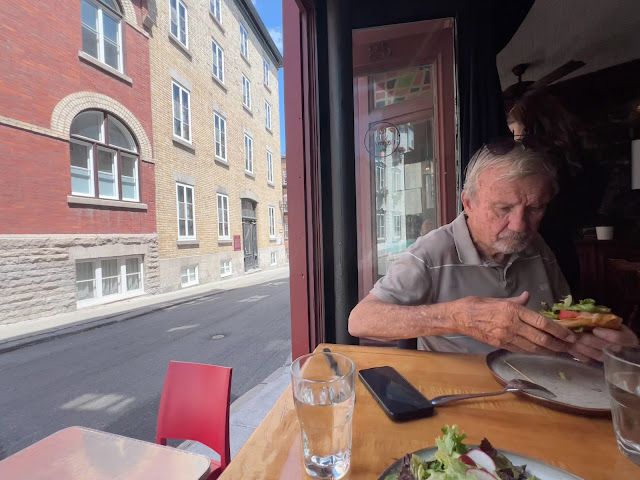 Lunch at Chez Temporel, Rue Couillard
Lunch at Chez Temporel, Rue Couillard.
Rue Couillard (Couillard Street), is named for Guillaume Couillard, one of Quebec's first permanent settlers. It runs through Upper Town's oldest residential neighborhood. Named the Latin Quarter, after the famous Latin Quarter of Paris, it's the home of Quebec Seminary and the original location of Laval University. Café Terrasse la Nouvelle France, on Rue du Trésor (Treasure St).
The salmon at Café Terrasse was so good we ate dinner there twice. It had a maple syrup sauce which sounded rather odd but, to Doug's amazement, was very good.
Rue du Trésor is known for its outdoor art market throughout the summer & occasionally in winter.
Marilyn enjoyed lunch one day around the corner from Rue du Trésor on the shady terrace of a restaurant on Rue Ste Anne (Saint Anne Street). At booths across the street, artists create portraits and caricatures for passers-by.
Chalmers Wesley United Methodist Church, corner Rue St Louis & Rue Ste Ursule.
Ruelle (Alley) des Ursulines off Rue Ste Ursule near Rue St Louis.
Corner Rue Ste Ursule & Rue Ste Anne. Note that street signs are on the sides of buildings: white oval outlined in red.
Rue St Ursule: archways, some with doors, to inner courtyards.
Inner courtyard.
Sidewalk garden, Rue Ste Ursule.
Sanctuaire Notre Dame du Sacré Coeur, Rue Ste Ursule.
In
2016 Radio Canada reported the chapel and buildings of the Sacred Heart Monastery had been sold and except for the chapel were to be developed into apartments. The chapel was to be preserved but remain closed to the public.
Rooftops of Rue Ste Anne. Basilique-Catédrale Notre-Dame de Québec beyond.
Juxtaposition of centuries.
"L'Envol" ("Taking Flight"), monument to the teaching brothers. Bronze wing & flame atop columns are etched in stone opposite, symbolizing knowledge passed from teacher to student, represented by bronze head.
Similarly, at Place Tourangelles (Angels Tower Square) by the Ursuline Monstery is a monument to the women who came to Quebec to teach.
.jpeg)
The Ursuline school, monastery, chapel, and cultural center have occupied Rue du Parloir and Rue Donnacona since the 17th century.
Ursuline Monastery, 2024 & 2009.
Ursuline Chapel & Cultural Center.
Rue Ste Angèle from Rue St Jean. Quebec Provincial flags on Restaurant Chez-Soi La Chine.
L'Entrecôte (rib eye steak) Saint-Jean Restaurant, corner Rue St Stanislas & Rue St Jean.
Here the Sisters of the Good Shepherd provided services to women and children prior to the province taking over social services. Today it is the Musée Bon Pasteur (Good Shepherd), displaying the history of the religious community.
Hmm...street closed...which way to go?
The direction dilemma brings to mind another quandary: La Québec vs Le Québec.
While language lovers like Marilyn thrill to gender, past participle agreement, etc, most folks, well, don't. So just a quick pointer: French distinguishes province from city by gender: LA Québec is the province. LE Québec is the city.
Another mystery: to the French "April Fools" is "April Fish"—"Poisson d'Avril," when children furtively stick paper fish on one another's back.
Back to gender. Unfortunately, LE Québec is also LA Ville de Québec, because ville is feminine. Fun, right? It makes sense with say New Orleans, which is a feminine city, so it's both LA Nouvelle-Orléans and LA Ville de Nouvelle-Orléans. Moving on...
Rue Ferland, looking toward the port.
There are numerous museums in Vieux Québec, but just walking through the town is like walking through history. In 2009, Marilyn took in the Musée national des beaux-arts du Québec (National Museum of Fine Arts) next to the Plains of Abraham.
 Musée national des beaux-arts du Québec.
Musée national des beaux-arts du Québec.
She was especially drawn to Jean-Auguste-Dominique Ingrès's painting Oedipus and the Sphinx and Jean-Paul Riopelle's Tribute to Rosa Luxembourg, a work of 30 consecutive paintings in 3 panels over 5 feet tall and totaling 131 feet in length.
Jean-Paul Riopelle, "L'Homage à Rosa Luxembourg," though difficult to appreciate in miniature.
On our last day we did a walking tour with a wonderful guide, Michel P, who was well-informed, entertaining, and kept us moving.
Sign up for tours at the Musée du Fort & meet across the street at Place d'Armes.
We followed Michel down Rue du Buade alongside the cathedral, down the Charles-Baillargé Stairs, and down Côte de la Montagne from Haute to Basse Ville (Upper to Lower Town).
Looking from Côte de la Montagne (the hillside) to Basse Ville (Lower Town).
Do you see the bit of pink near the top right in the above photo? It's "Monsieur Rose," part of a public art exhibit sponsored by EXMURO, consisting of large, inflated, pink people peeking over rooftops, as above, and hanging in trees, as below.
Rue St Pierre, with Monsieur Rose on rooftop, right.
We followed Michel along Rue Notre Dame to a gigantic fresco on the side of a building.
The Fresco of Quebecers, painted by 12 French and Quebec artists in 1999, illustrates the history of Quebec City.
Continuing down Côte de la Montagne, we arrived at Place des Canotiers (Sailors Square), built next to Quebec City's original port, and today a public square, shops, and the cruise ship terminal.
Rue Dalhousie across from Place des Canotiers.
North along the port from Place des Canotiers is Le Grand Marché (the Big Market), where local agriculturists sell food of any sort you can imagine, and artisans sell their works.
L'Embarquement, Michel Saulnier, 2008, in front of Le Grand Marché at the Vieux Port, a maple leaf...
...but also a boat.
Frozen St Lawrence at the Old Port, April 2009.
From Place des Canotiers, we followed Michel up Rue du Porche to Place Royale.
Place Royale, where Samuel de Champlain founded Quebec City in 1608.
Bust of Louis XIV, Place Royale.
For most of the 17th century, Place Royale was known as Place du Marché (Market Square). The first building was a combination fort, store, trading post, and residence.
Iron bars hold stories together.
Our Lady of Victories was built because it was difficult for people to travel between Lower Town to Upper Town in winter to get to Notre Dame Cathedral.
Walking along Rue des Pains Bénis (Blessed Bread)...
...& Rue Notre Dame to...
Another way to reach Petit Champlain from the Old Port is via the Escalier du Quai-du-roi (King's Wharf Stairs) from Boulevard Champlain.
Le Cochon Dingue (Crazy Pig) restaurant, Petit Champlain.
Passage de la Battérie, rue Sous le Fort, leading to the Royal Battery of stone walls with embrasures fitted with reproduction cannons.
Passage de la Batterie.
Woodpecker Boutique, Petit Champlain.
Restaurant Sous le Fort (Under the Fort), Petit Champlain.
Petit Champlain.
Perhaps the most recognizable street in Petit Champlain is Rue du Cul-de-Sac.
Rue du Cul-de-Sac, 2009...
...& 2024, aka Umbrella Alley.
Before returning to Haute Ville, everyone had a photo shoot with Michel.
Bust of Quebec artist Jean-Paul Lemieux, Château de Frontenac, Doug, Marilyn, Michel.
The easy way from Quartier Petit Champlain to Terrasse Dufferin: the Funiculaire.
Us take the easy way?!? We walked up the 59 steep steps of Escalier Casse-Cou (Break-Neck Stairs)...
.jpeg) ...then 115 steps up Escalier Frontenac (Frontenac Stairs) to Terrasse Dufferin, where...
...then 115 steps up Escalier Frontenac (Frontenac Stairs) to Terrasse Dufferin, where...
...Samuel de Champlain presides over Vieux Québec.
Marilyn regained Upper Town and the Dufferin Terrace in 2009 by walking up Rue des Remparts.
Walking up Rue des Remparts...
Sunset over historic Lévis. Mr Rose, bottom center, is also taking it in.
Château Frontenac.
Rising along Dufferin Terrace, Château Frontenac dates from 1892, one of many such hotels built by the Canadian Railway on its routes to encourage tourism.
Now a Fairmont hotel, the château has been enlarged 3 times.
Under Dufferin Terrace and the Frontenac are the remains of forts the French and British constructed, added to, and modified during their alternating occupation of Quebec City in the 17th and 18th centuries. St Louis Forts and Châteaux National Historic Site opened in 2008 during the 400th Anniversary of Quebec City.
Openings were cut in Dufferin Terrace & covered with clear pyramids, providing views into the old forts below.
Doug took the underground fort tour, while Marilyn opted to observe from above.
Along Dufferin Terrace past the Frontenac in the Parc des Gouverneurs is the Wolfe-Montcalm obelisk, a monument to the British and French generals who led and died in the 1759 battle on the Plains of Abraham.
Wolfe-Montcalm monument & Frontenac, 2024. Frontenac from Plaines d'Abraham, 2009, site of the battle that won Québec decisively for the British.
Further along Dufferin Terrace is a staircase. In winter you can stop partway up and return to the Frontenac at 40 mph via the 800-foot-long, 3-lane wood toboggan run built in 1884.
 Looking down Quebec's 140-year-old Glissade sur Neige.
Looking down Quebec's 140-year-old Glissade sur Neige.
Continuing up the 300+ steps you arrive at the Promenade des Gouveneurs along the Plaines d'Abraham.
300+ steps from Terrasse Dufferin to Promenade des Gouverneurs.
Plaines d'Abraham, Promenade des Gouverneurs, Fleuve St Laurent, April 2009.
And lastly, wandering through Vieux Québec in 2009, Marilyn was enchanted by a colorful dancing jester who seemed to spring from an alley on Rue des Jardins.
"Le Grand Bienvenue": an impish jester seemed to have danced down a silver ribbon.
In 2024, we found "Le Grand Bienvue" ("The Big Welcome"), a public art commission by Nicole Taillon, on Côte de la Fabrique, now with a gold ribbon. After 23 years lying in wait in the alley, the statue had been sold. In a subsequent sale, it was returned to public view.
"Le Grand Bienvenue," Côte de la Fabrique, 2024.
"To you, from here or elsewere, summer or winter, day or night, Welcome."

“Our” Neighborhood: 1) Hotel Château Belleuve 2) van parking 3) Château Frontenac 4) St Exupéry 5) Porte St Louis 6) Citadelle 7) Rue St Denis 8) Rue Haldimand 9) Rue St Louis. Streets/Stairs: 10) Porte Kent 11) Rue du Trésor 12) Rue Ste Ursuline 13) Rue Ste Anne 14) Rue des Jardins 15) Côte de la Fabrique 16) Rue du Buade 17) Côte de la Montagne 18) Rue Notre Dame 19) Rue Sous le Fort 20) Rue Dalhousie 32) Rue Cul-du-Sac 22) Rue des Pain Bénis 23) Blvd Champlain 24) Escalier Casse Cou 25) Funiculaire 26) Escalier Frontenac 27) Escalier du Quai- du-Roi 28) Escalier Charles-Baillargé 29) Rue Couillard 30) Rue Fernand. Parks/Buildings/Art: A) Plaines d’Abraham B) Aux Anciens Canadiens C) Monastère des Ursulines D) Sanctuaire Notre Dame du Sacré Coeur E) Chapelle des Jésuites F) “L’Envol" G) Hôtel de Ville H1-2) “Le Grand Bienvenue” 2024, 2009 I) Chez Temporelle J) Catétrale de la Sainte Trinité K) Monument de la Foi/Place d’Armes L) Parc Montmorency M) Basilique-Catédrale Notre-Dame de Québec N) Fresque des Québécois O) Place Royale P) Eglise Notre Dame des Victoires Q) Place des Canotiers R) Passage de la Batterie S) Batterie Royale T) Café Terrasse la Nouvelle France U) Musée du Fort V) Petit Champlain W) Terrasse Dufferin X) Glissade sur Neige Y) Escalier/Promenade des Gouverneurs Z) Parc des Gouverneurs/ Monument Wolfe-Montcalm
 Steeples abound on Quebec's skyline, although the province declared its secular status in La Révolution Tranquille (the Quiet Revolution) in the 1960s.
Steeples abound on Quebec's skyline, although the province declared its secular status in La Révolution Tranquille (the Quiet Revolution) in the 1960s. Maison Béthanie (red building on left), Rue Couillard.
Maison Béthanie (red building on left), Rue Couillard.








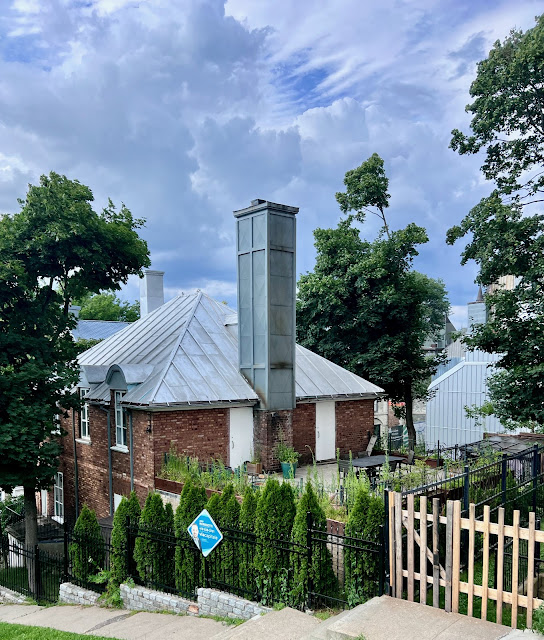



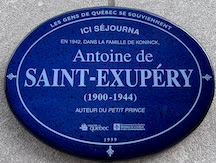








.jpeg)






.jpeg)

.jpeg)






.jpeg)
.jpeg)
.jpeg)
.jpeg)



.jpeg)
.jpeg)





.jpeg)







.jpeg)

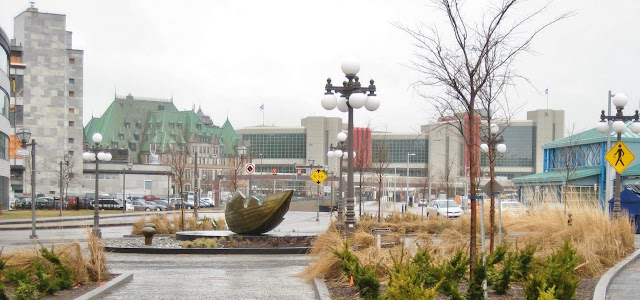




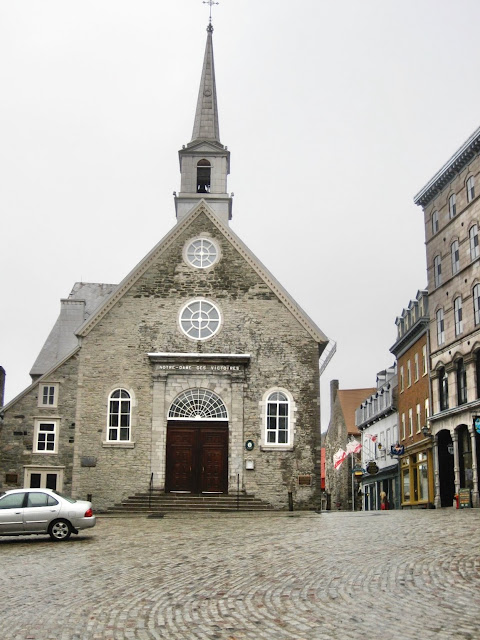





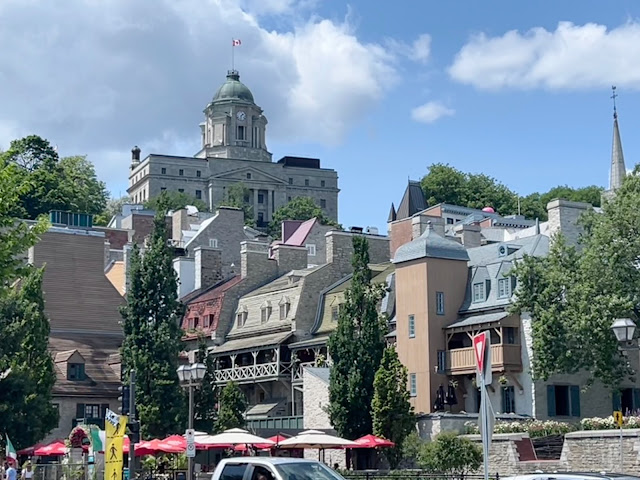


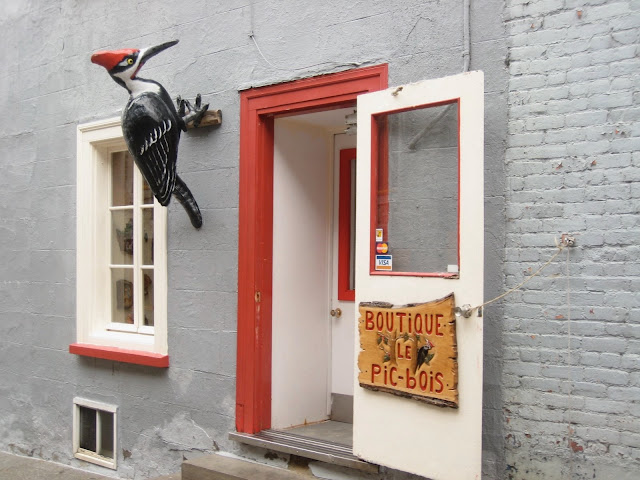








.jpeg)

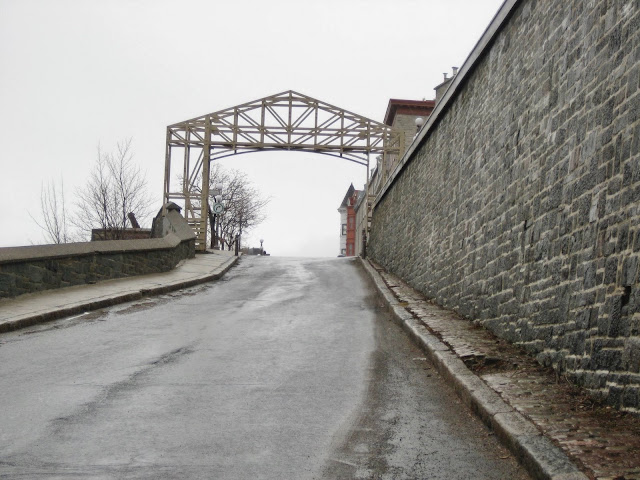
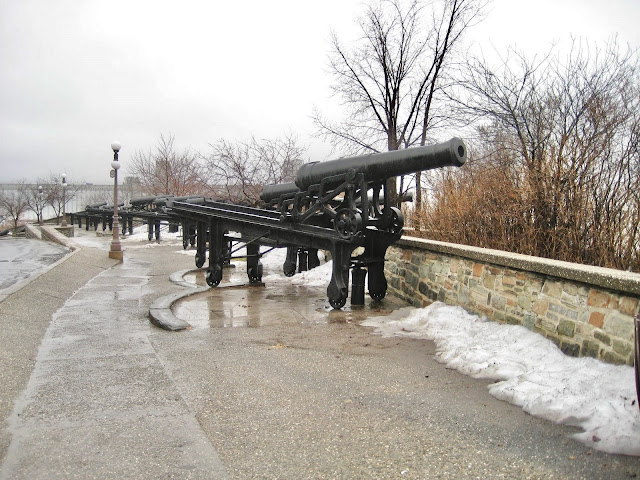



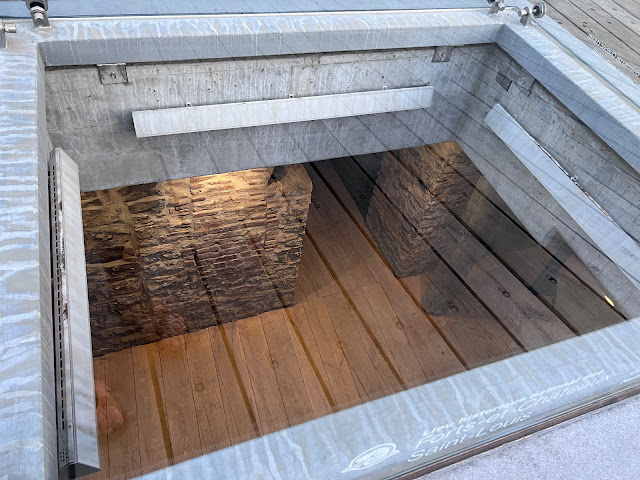


.jpeg)








Wow! Thanks for this entry. We spent just a day in Quebec City on our last trip, and it was so nice to see pictures and read about the many things we missed. You must have taken some of the Palace Royale pics very early in the day; before all the "tourists" arrived! Fantastique.
ReplyDeleteMerci🙏. Not many tourists when we were there. We were actually in Lower Town in mid-afternoon❣️
DeleteI wondered as well: where is everybody?? Any meals to eat there, or gifts to take home? In any case, you seemed to enjoy it - with GREAT weather!
ReplyDeletePlenty of restaurants and gift shops. We were more focused on just enjoying walking about, the people, being there.
DeleteLove, love, love the pictures and history. Thanks for the tour. So picturesque and European this side of the pond! -Kathleen P.
ReplyDeleteThanks, Kathleen. It's one of the things I love about anywhere in Canada--it may be our neighbor but it is so European.
DeleteGreat pictures. I love the colors and buildings rising plumb from a slanted base. Thank you. Steve
ReplyDeleteYes, it's an amazing, wonderful place..
DeleteBeautiful photos of a beautiful city! You'd think you were in Europe.
ReplyDeleteThanks, Scott. Indeed, it is very European--and they speak French! Well, Québécois:-)
Delete